Flower bulbs: how and when to start planting bulbs
Planting bulbs in pots or borders is a great way to add colour and interest to your garden or courtyard year round. Follow our expert advice on how and when to plant bulbs

Knowing when to plant flower bulbs is crucial to every gardener, to ensure that you can enjoy these easy to grow and resilient blooms throughout the seasons. Flower bulbs give a reliable and colourful display in a garden or courtyard with minimum effort required, especially if they are perennials. As most bulbs planted in the ground will naturalise over time and pop up unaided year after year. Alliums and snowdrops are just a couple of gorgeous perennial bulbs that will thrive in a garden.
Spring flowering bulbs, such as daffodils, crocuses and jewel-coloured tulips, herald an end to winter and bring colour back to the garden after its period of dormancy. With careful planning, however, you can have a succession of colour and interest throughout the year from flower bulbs.
So whether you aim for a carpet of blooms planted under deciduous trees, massed displays in borders, or even a few in potted combinations in a courtyard or patio, make some room for planting bulbs in your garden, whatever its size.
Read on to find out when and how to plant flower bulbs and also the best ones to buy. For more inspiration on what to plant in your garden see our garden ideas section.
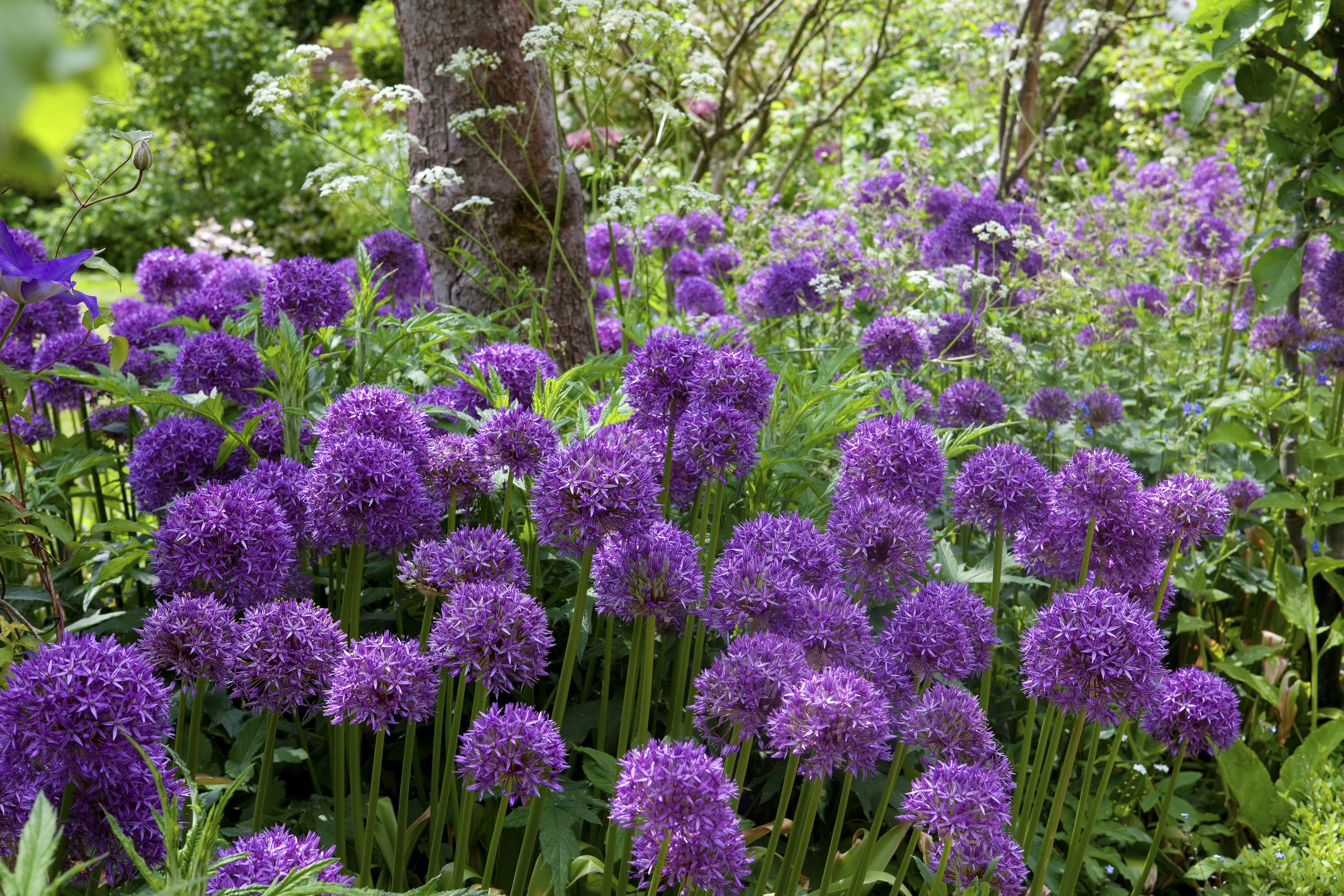
Alliums are easy to grow and look great planted en masse
When to plant flower bulbs
Autumn is the time to start planting bulbs, while the soil is still warm. Whether you choose bulbs, corms, tubers or rhizomes - you want to have planted all of them by early December, before the coldest winter weather sets in.
See our guide to where to buy plants online for sources for your flower bulbs.
Before you start planting, consider the following:
Get small space home decor ideas, celeb inspiration, DIY tips and more, straight to your inbox!
- Always select good quality, plump, firm flower bulbs with little or no root, and reject very small, soft, shriveled or marked ones.
- Use the best grade for containers, beds and borders, and the more economical, second-size for naturalising in grassland or woodland.
- Plant your flower bulbs as soon as possible after purchasing, but if you can’t, then store them in a cool, dark, relatively dry place, using the paper or mesh bags they came in.
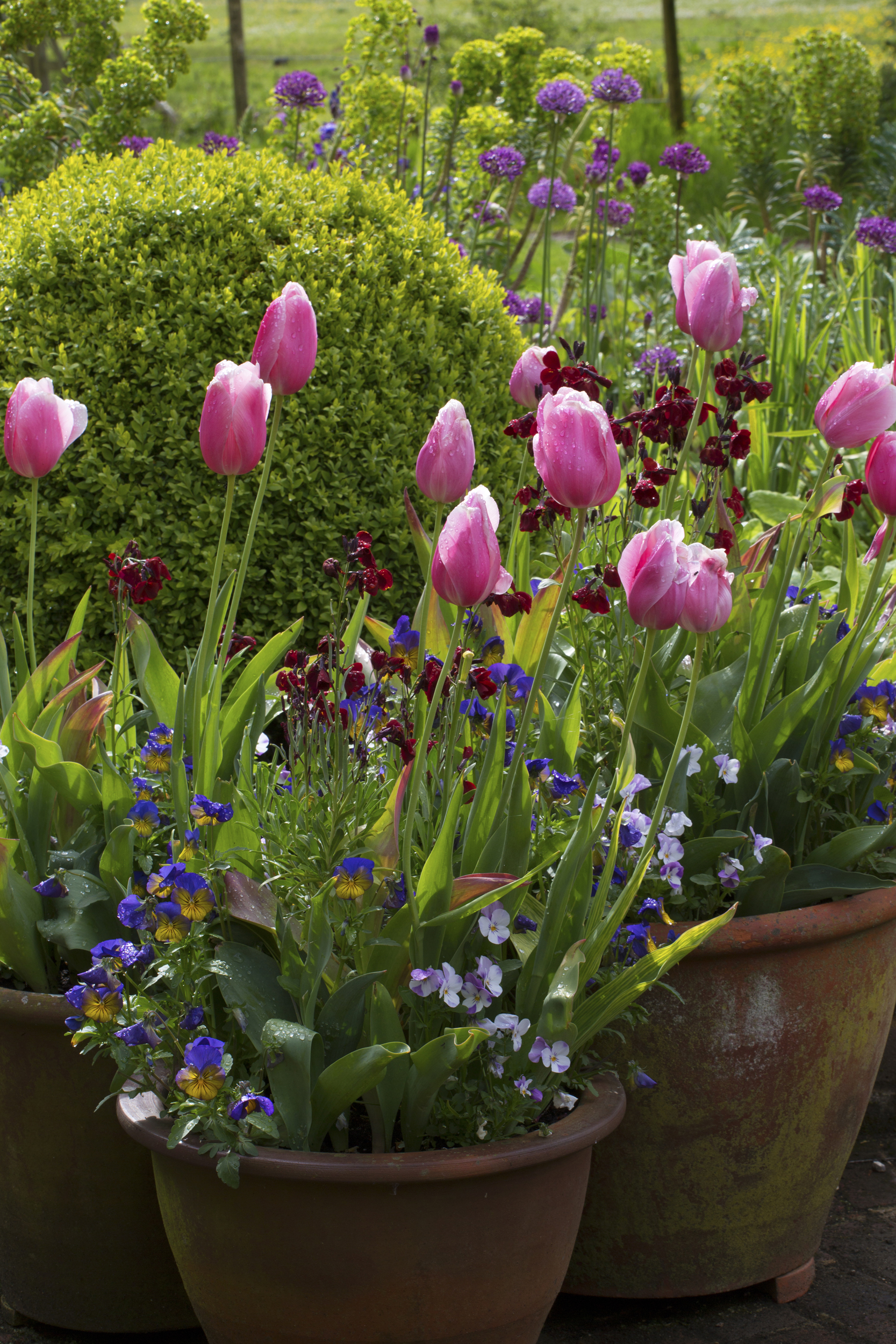
Mixed flower bulbs planted in a container make a colourful, moveable display
What flower bulbs to plant
Plant a variety to have a succession of different flower bulbs flowering from January to May, from the early-blooming snowdrops, winter aconites and crocuses, through snowflakes, scillas, muscari, fritillaries, hyacinths and narcissi, to tulips, alliums and camassias.
Tulips are the most prolific, along with cheerful daffodils, which come in a variety of shapes and colours, from the common yellow to whites and pinks, with singles, doubles or split-coronas. Don’t overlook some other stunners, though, such as muscari and fritillaries, to create your spring scenes.
For early summer colour, you can't beat bold and architectural alliums. These ornamental onions can be added in sunny borders. Allium bulbs should be planted in early to mid autumn and perform best in a sheltered site.
TOP TIP: The lower-priced bulbs are generally the ones that are easier to grow. New cultivars are usually more expensive.
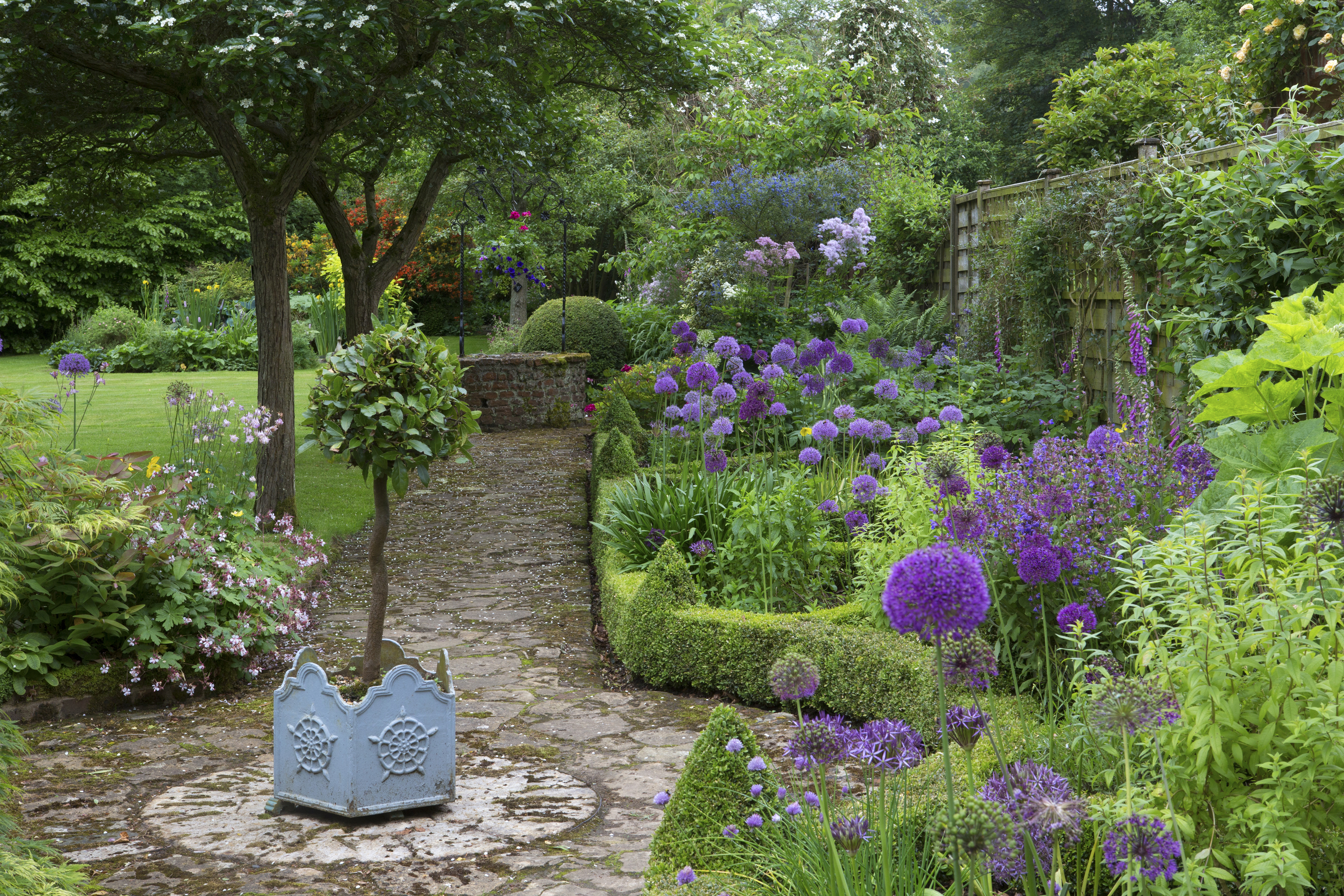
Alliums look striking planted in more formal borders edged with neat hedging
Where to plant flower bulbs
To ensure the flower bulbs thrive choose the best planting site. Good drainage is important, so that the bulbs do not rot, and ideally plant them in soil on the loamy, sandy side, in a sunny, sheltered spot, or areas of light shade.
You could create a bulb meadow or jewelled section in the lawn with a succession of flower bulbs. Hardy snowdrops are lovely mixed with hellebores and aconites, planted in naturalised drifts on lawns, against contrasting coloured winter stems, or in troughs. However, snowdrops they are best bought and planted ‘in the green’ as dried bulbs are more difficult to establish - this means immediately after they have flowered, with their foliage still intact.
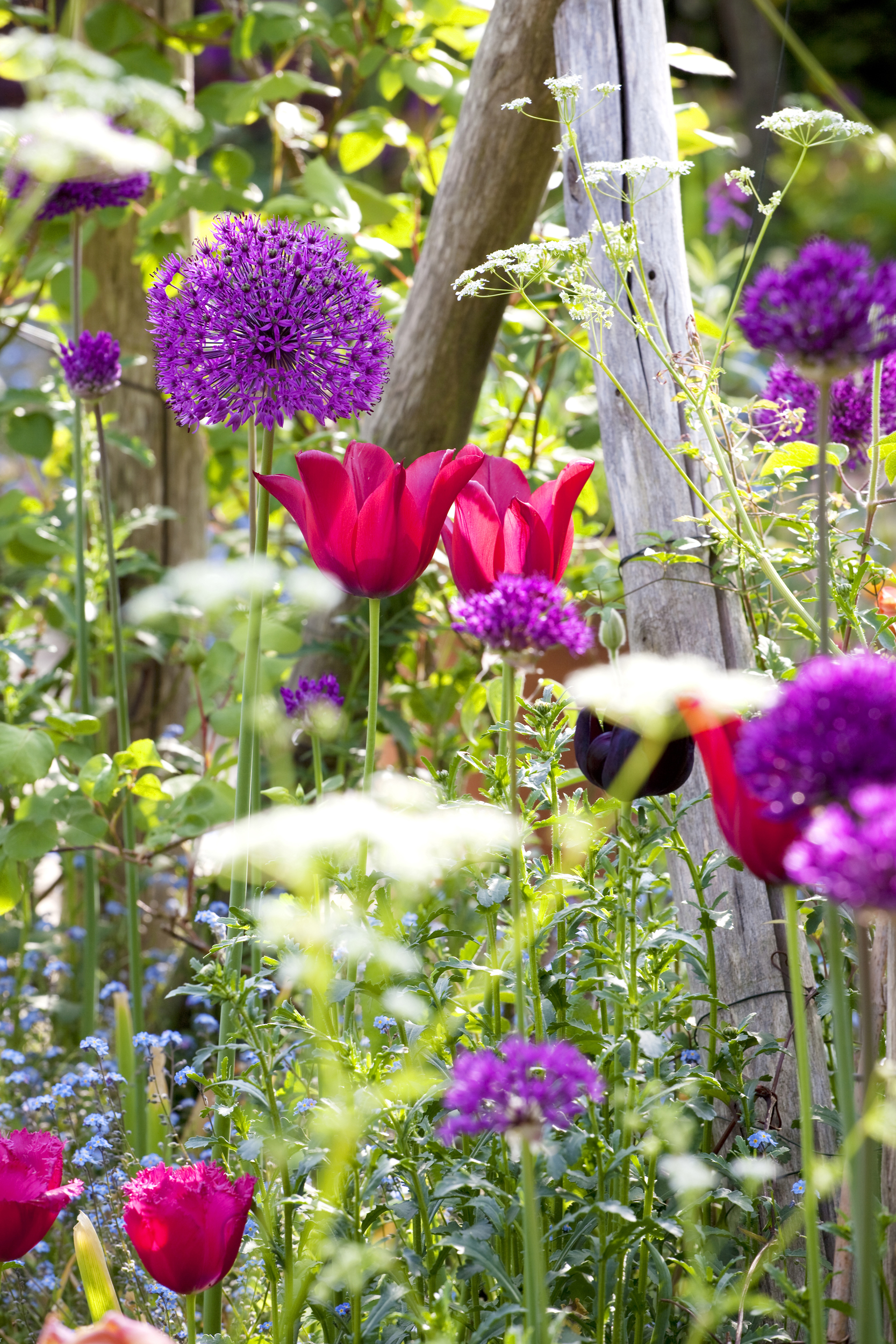
Here, tulips, alliums, ammi and forget-me-nots have been planted in naturalistic drifts
How to plant flower bulbs
A dibber is useful to make individual holes for small flower bulbs, and for large a good quality carbon-steel bulb planter is invaluable. There are many places you can buy these online, including Crocus, Harrod Horticultural, Suttons, and Waitrose Garden.
Wear gloves when planting flower bulbs as some can be a skin irritant, in particular hyacinths, daffodils, irises and scillas.
- In heavy soil, mix grit into the base of the planting hole. Loosen the soil in beds and borders before planting flower bulbs, fork the soil over and work in some bone meal.
- Different flower bulbs are planted at different depths, generally three times the height of the bulb - check the pack for instructions. Press them gently in the hole before burying the right way up – with the pointed growing tip facing upwards.
- Some tubers, such as begonias, are flatter and should be placed just below the soil surface with the indented side facing upwards.
- Lie flower bulbs on the ground where you want to plant them, in drifts or rows.
- Place bulbs for naturalising by dropping handfuls and plant them where they fall.
- Older varieties of daffodils naturalise best.
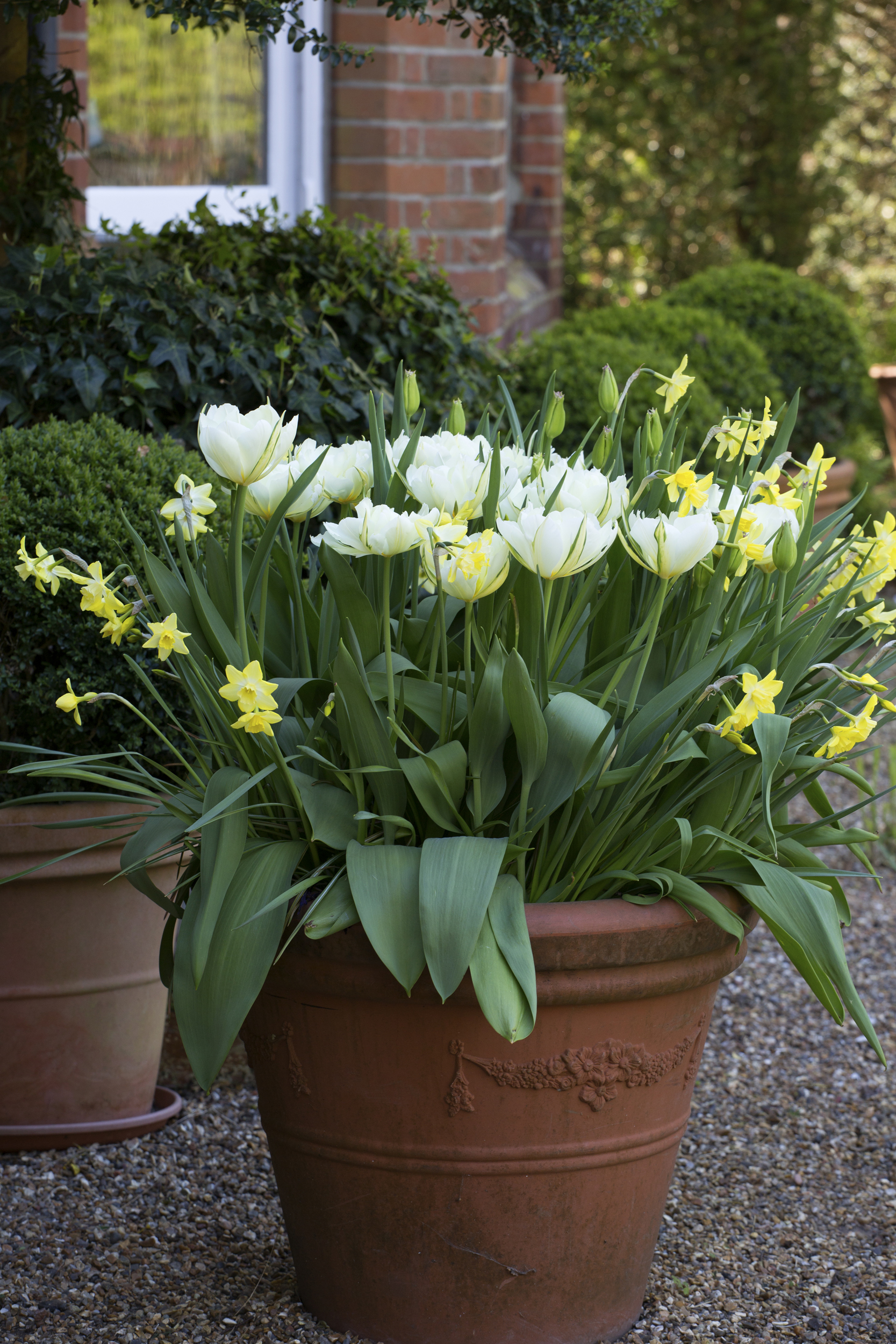
Mix spring flower bulbs in a container for a varied effect, such as pale tulips with golden narcissi
Planting flower bulbs in pots
Pots filled with flower bulbs will enliven patios and create seasonal focal points in the garden. They are a wonderful opportunity to get really creative and plant a garden on a small scale.
- Different flower bulbs need to be planted at different depths in a large mixed container, starting with the deepest first, adding a couple of inches of soil between layers.
- Use a good quality general purpose compost and mix in a handful of fine grit to improve drainage, or choose a specially prepared bulb compost.
- Water containers planted with flower bulbs regularly.
- The layering approach, or creating a 'bulb lasagne', is ideal for containers. For example: put potting mix at the bottom of a pot, add a layer of tulips, cover with soil, then add hyacinths, then another layer of soil and miniature daffodils, topped with soil.
- Try not to put bulbs directly on top of each other.
In containers you can keep a closer eye on pests, move your display, and enjoy more closely some of the tiniest, scented bulbs. For more ideas, see our guide to container gardening.
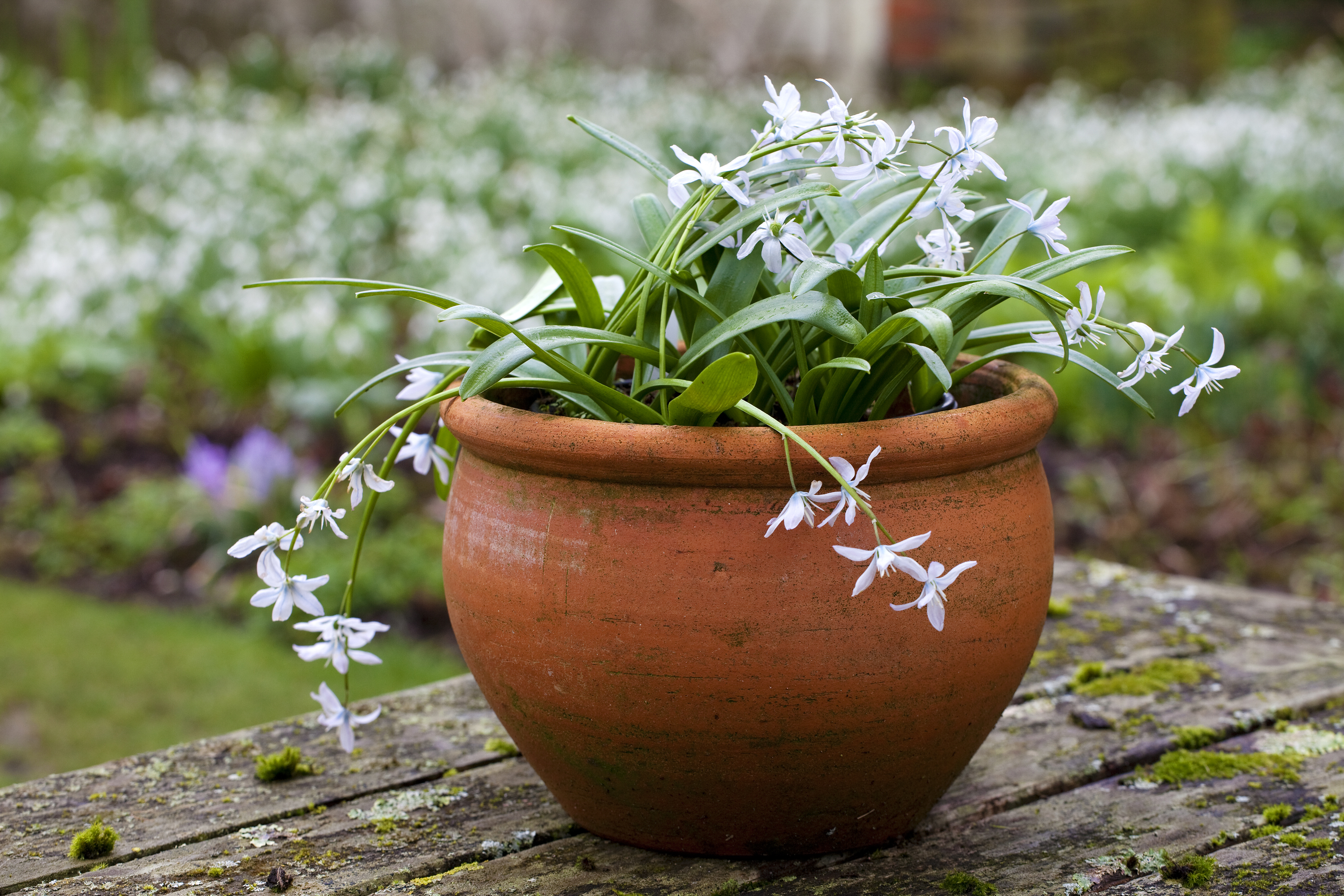
These pale flowers contrast wonderfully against a terracotta pot
Maintaining flower bulbs after planting
Deadhead spent flowers and let the foliage die down naturally, as the flower bulbs need the energy to produce next year’s flowers. It is a good idea to grow other plants around the bulbs so that they will disguise the dying foliage.
Some bulbs will naturalise; others, such as tulips, need lifting and storing; while the rest need clumps divided and replanted in the green.
Companion planting for flower bulbs
Whether you choose to grow flower bulbs in formal displays, such as in parterres, or prefer planting bulbs naturalistic style, add extra interest with companion plants.
Blocks of tulips or hyacinths filled in with flowering annuals or perennials covering the bare soil can be colour-themed for a pretty display. Ground covers also act as an attractive backdrop foil and provide interest as the bulbs finish.
Layering the bulbs will get the most use out of a space. Orchestrate your display so that as bulbs fade in succession, annuals, perennials or shrubs come into play and cover the untidy foliage.
Consider the following combinations:
- Plant daffodils under a specimen weeping cherry.
- Select prunus with lovely autumn colour and interesting bark and underplant with flower bulbs and perennials for interest to match each season.
- Plant bulbs among deciduous shrubs so that the flowers show through the bare branches in early spring, but then the dying foliage is covered by the newly emerging leaves on the shrubs.
- Companion planting favourites include bellis, bergenia, erysimum, euphorbia, hellebore, forget-me-nots, primula, pulmonaria, saxifrage, viola, alyssum, honesty and geraniums.
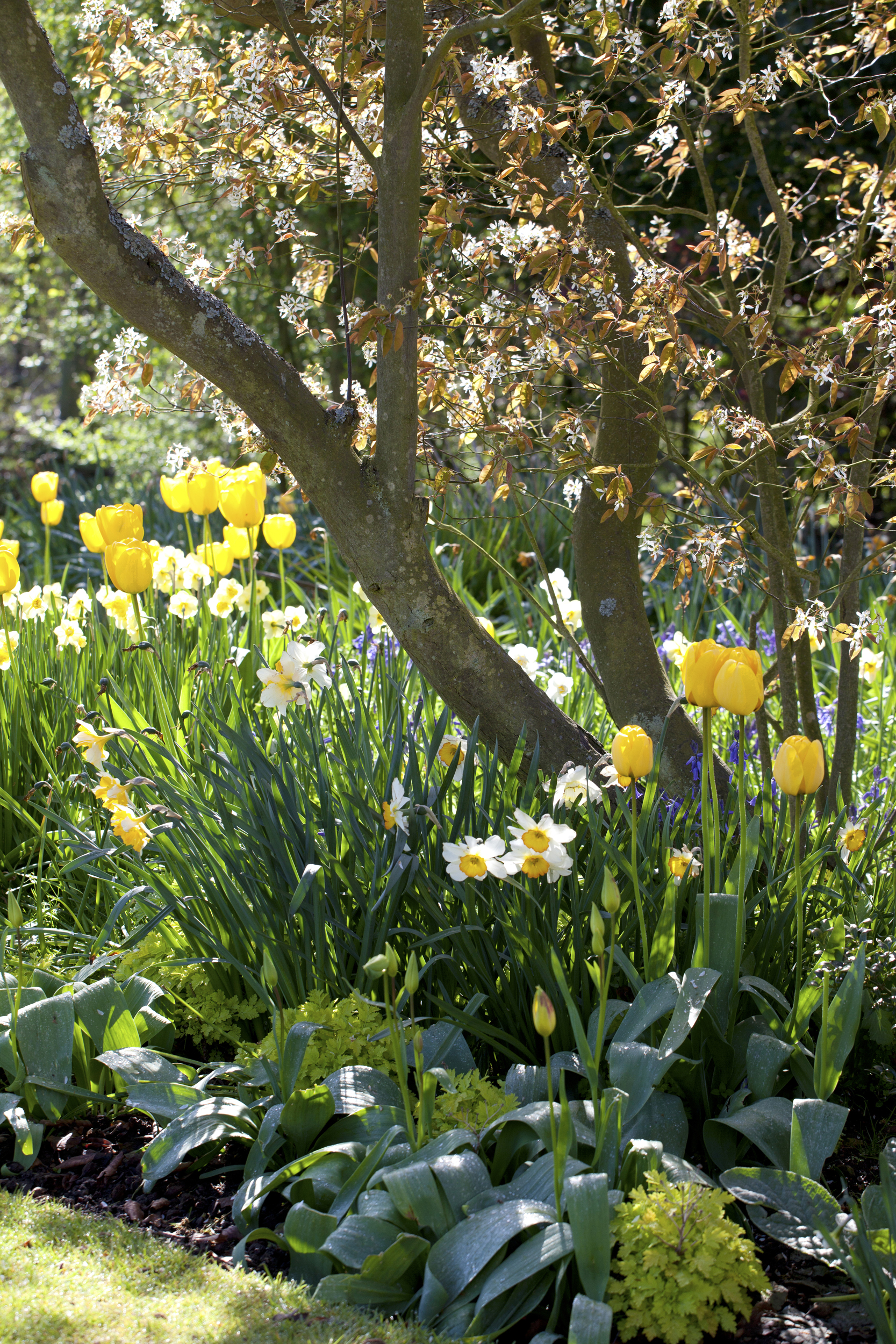
A blossom tree underplanted with tulips and daffodils make perfect companions
- Colour theme your planting – for example, pair white narcissi with blue scilla; yellow daffodils with purple polyanthus; pink and mauve tulips and hyacinths under pink cherries, or deep maroon tulip ‘Queen of the Night’ peering out of tufty, low carex grasses.
- Brighten a dark and shady spot with white narcissi, ‘Spring Green’ tulips and white hyacinths. For other ideas for what's best to plant in shady spots, see our guide to shade gardens.
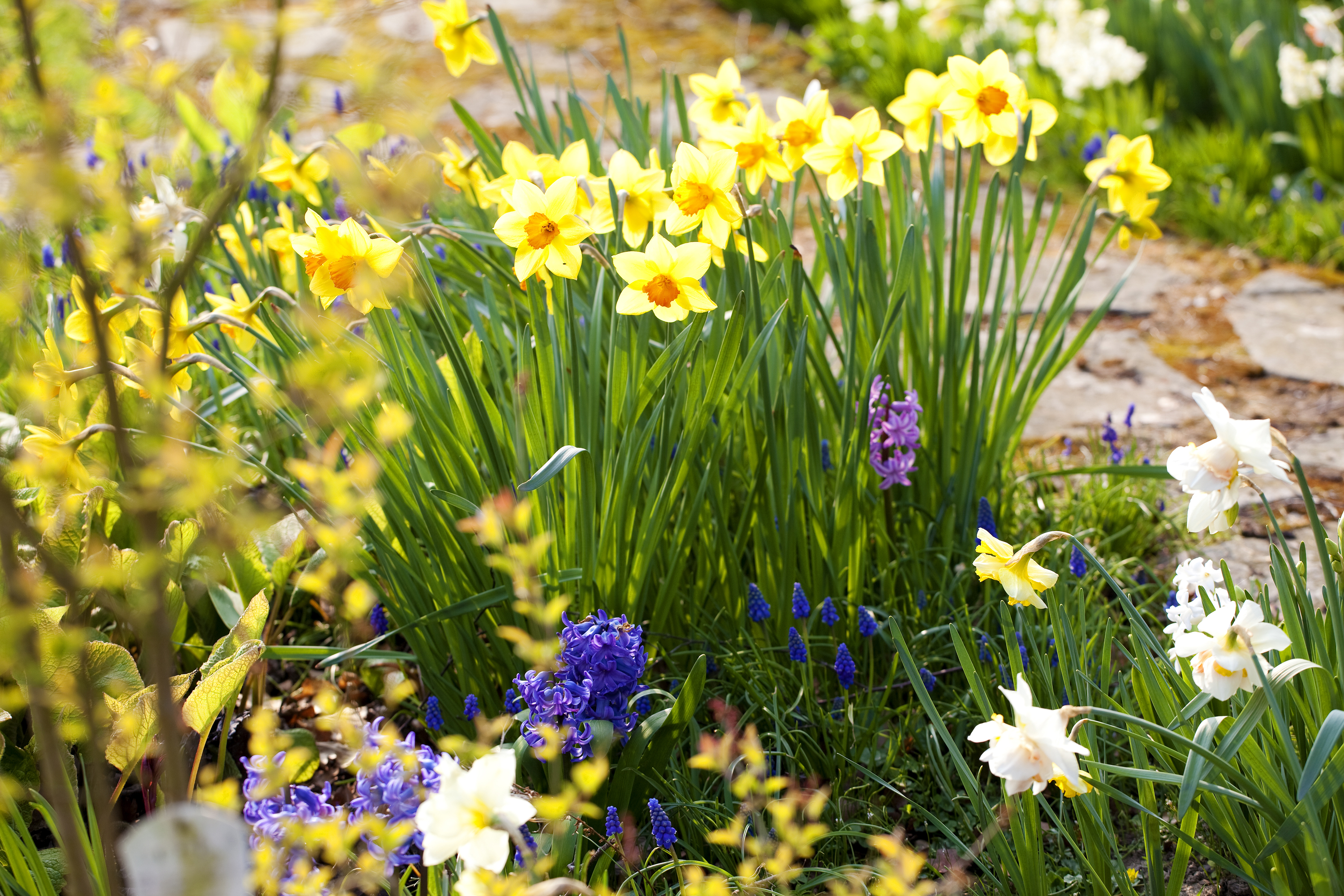
Yellow daffodils make a striking contrast against blue hyacinths
12 of the best flower bulb choices
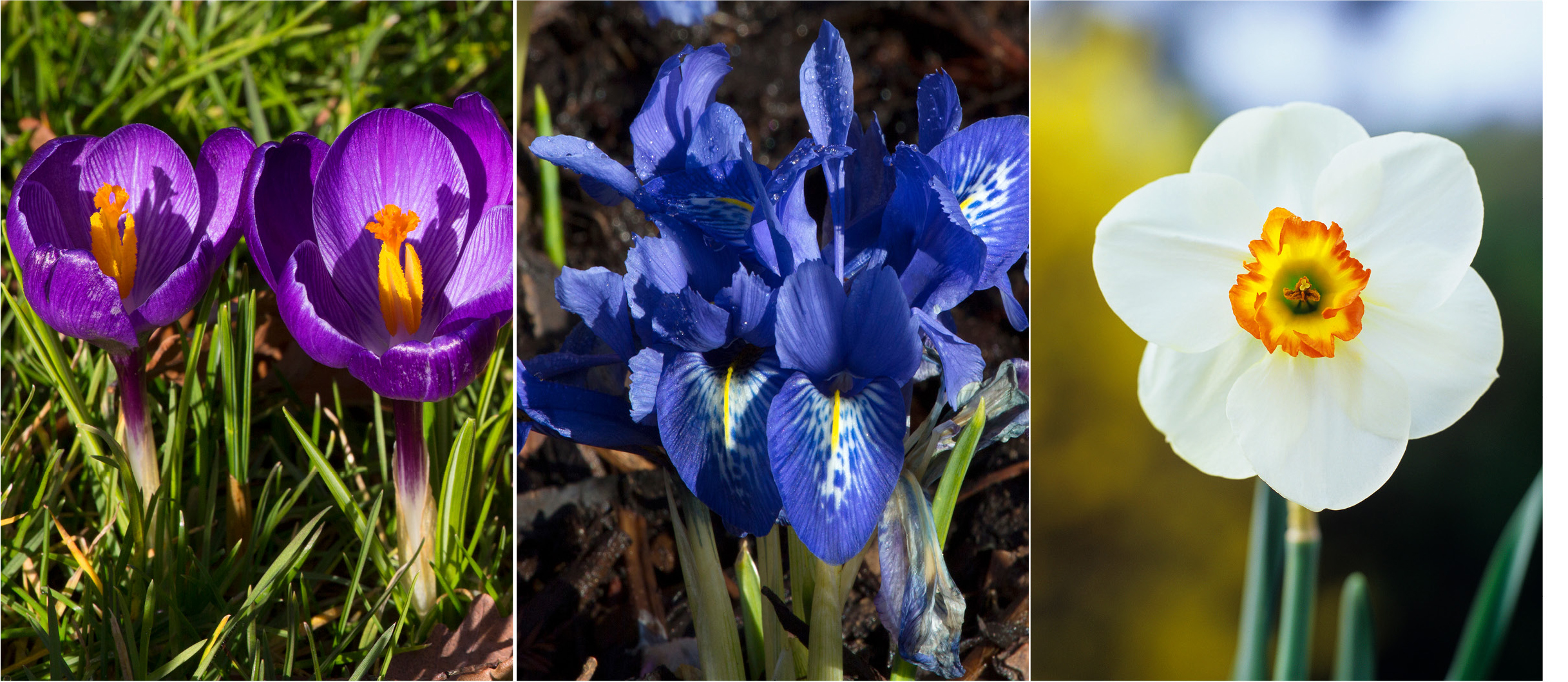
1 Crocuses are one of the first flower bulbs to brighten up lawns, semi-shaded areas, rockeries and containers. Excellent for naturalising, make sure they are planted in well-draining soil.
2 Iris reticulata are small early flowers to admire up close in planters or to carpet under trees and shrubs. Enjoy well-drained conditions, and a good baking while dormant in a warm, dry summer.
3 Narcissi offer a wide variety of cheery blooms, including daffodils, paper whites and fragrant jonquils, and are very tolerant. Easy to grow, they require little maintenance.
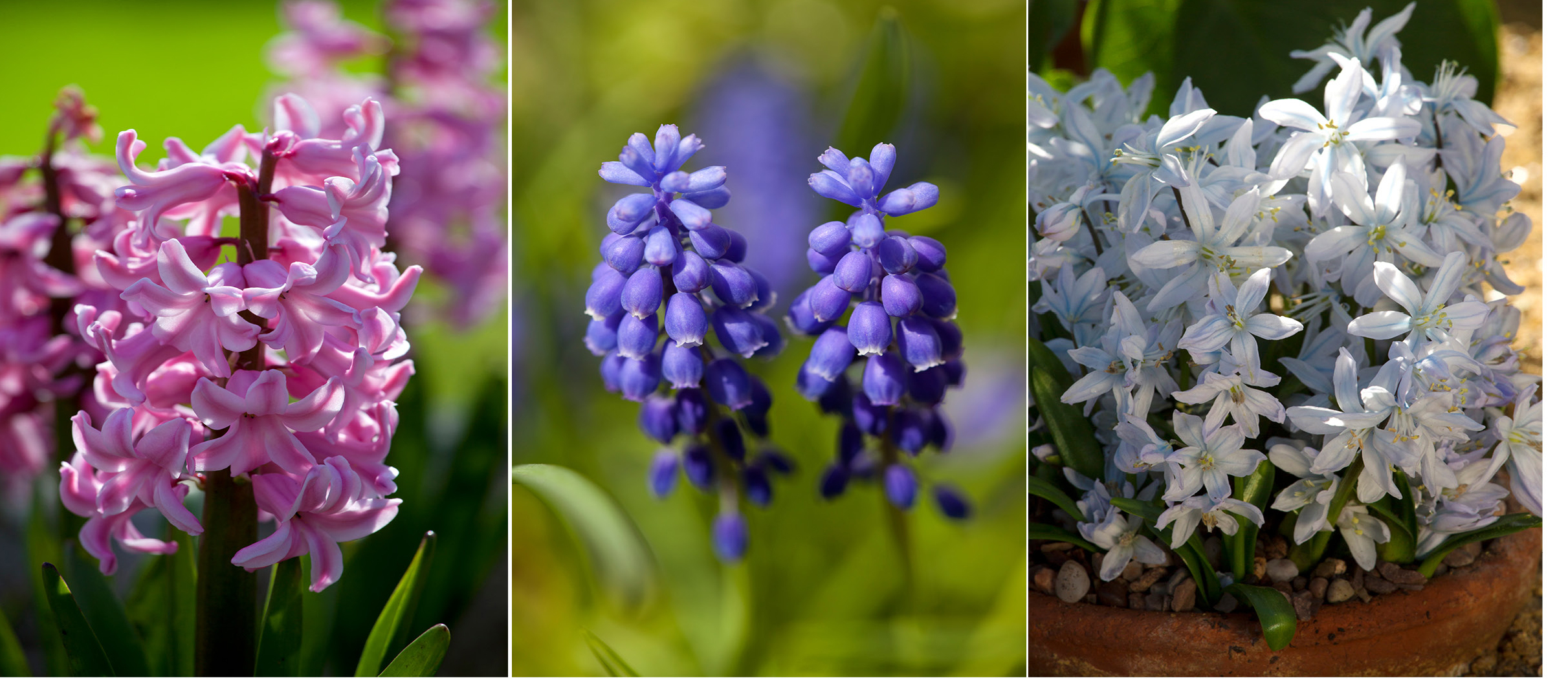
4 Hyacinths are prized for their impressive fragrant spikes. Plant new flower bulbs every year or two to ensure a good display.
5 Muscari or grape hyacinths naturalise well under trees and shrubs, scattered liberally in flowerbeds and also make lovely borders along paths. Mix with primroses, daffodils, pansies and early tulips for a pretty combination.
6 Scilla, squill, varieties offer blue, bright or pale flowers that are wonderful mixed with white narcissi or golden daffodils. Grow in sun to part shade and will naturalise in beds, borders or lawns.

7 Bluebell woods are a highlight in late April to early May. Plant native bluebells near wild areas as it is important that hybrids and Spanish bluebells don’t breed with the English native bluebell, one of our most precious wildflowers.
8 Tulips are the most popular of spring flower bulbs, and come in a stunning range of colour choices, from early to late varieties. Lift after flowering or replace each year with new bulbs.
9 Ranunculus produce vibrant clustered blooms and make lovely cut flowers as well as brightening up flowerbeds and pots. Soak the tubers before planting in a sunny spot.
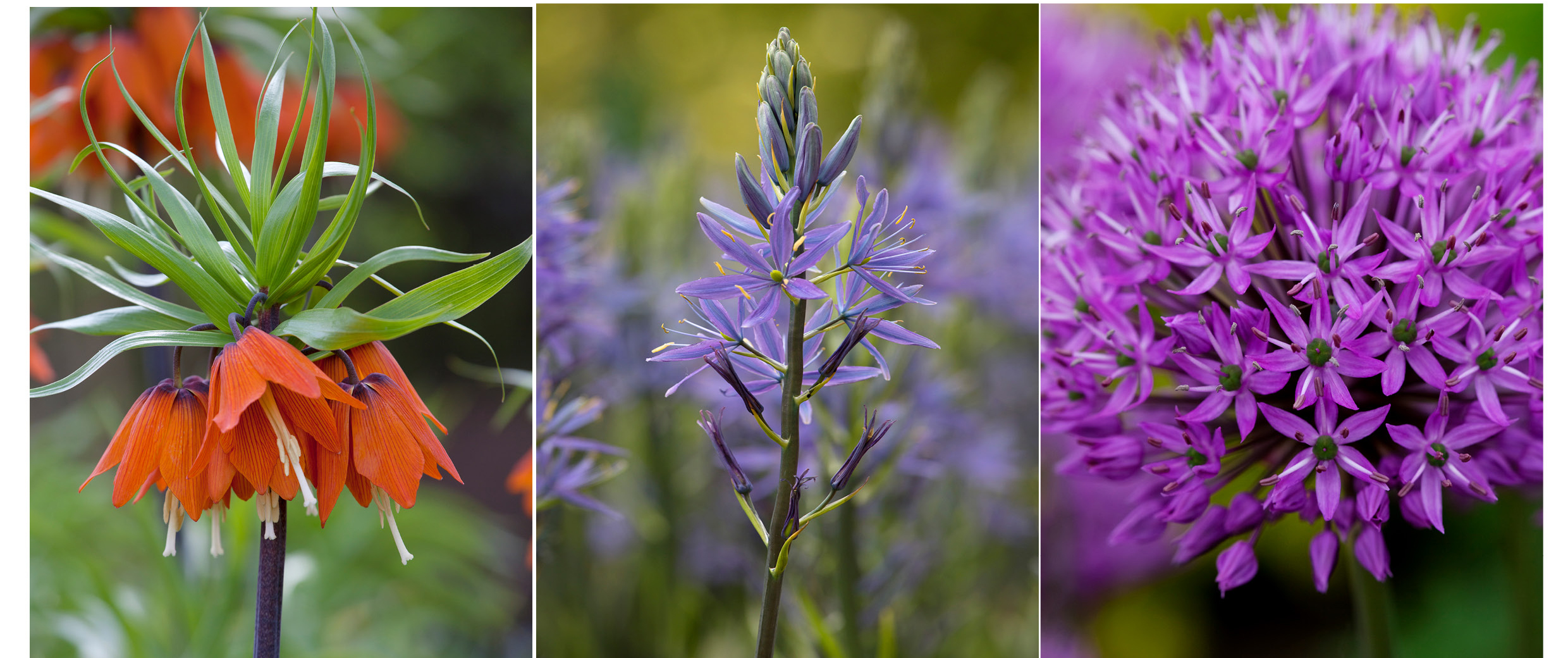
10 Fritillaries are bulbous perennials that include F. meleagris and the tall, impressive F. imperialis. Different varieties have different soil needs, so check the label before planting.
11 Amassias are ideal for naturalising in lawns and meadows. Take care not to plant them in children’s play areas or your pets’ favourite spot as they are poisonous.
12 Alliums offer a wide variety of elegant choices in purples and white, are easy to grow and look superb planted en masse. Stand-out favourite allium bulbs include ‘Purple Sensation’ and ‘Globemaster’.